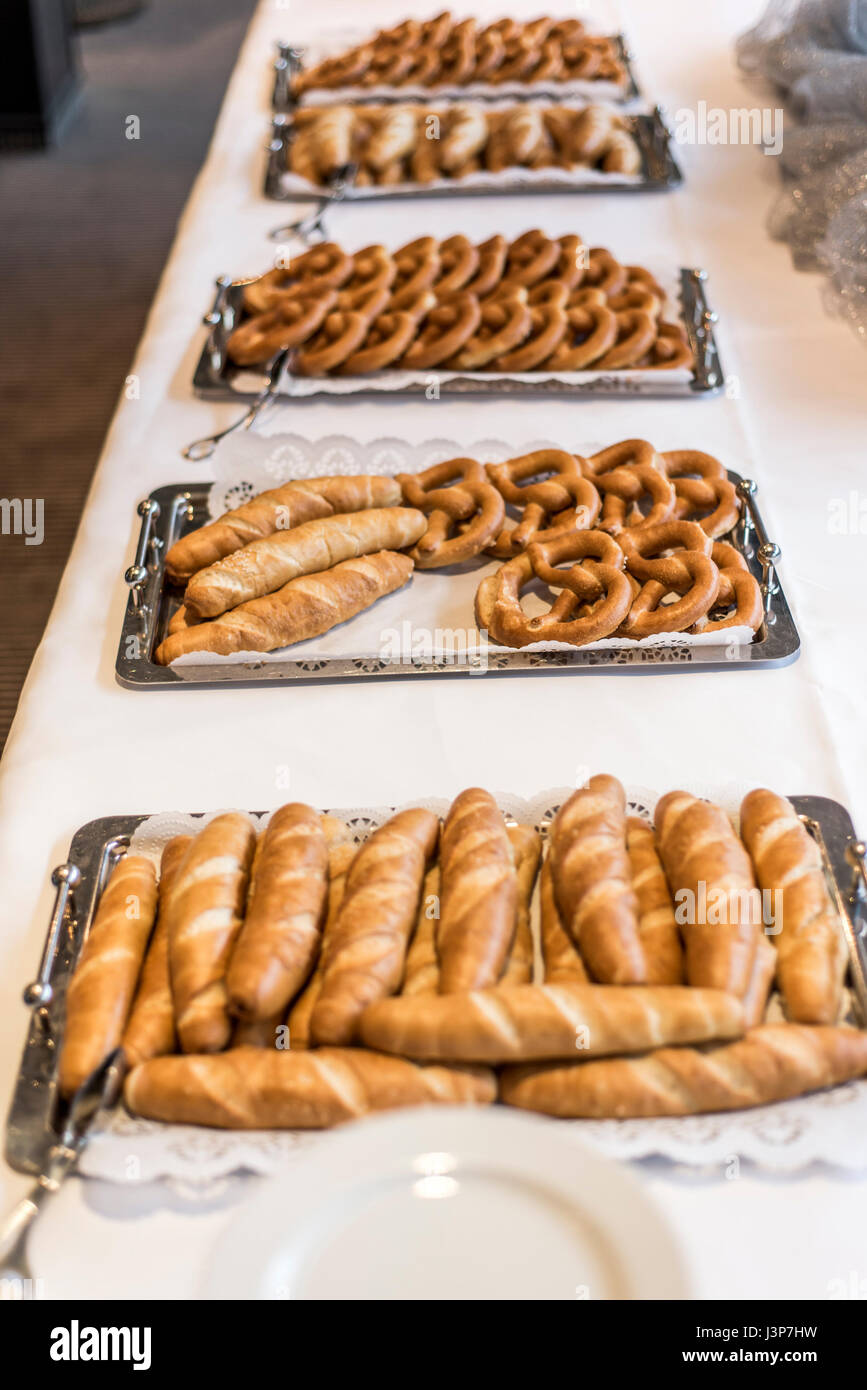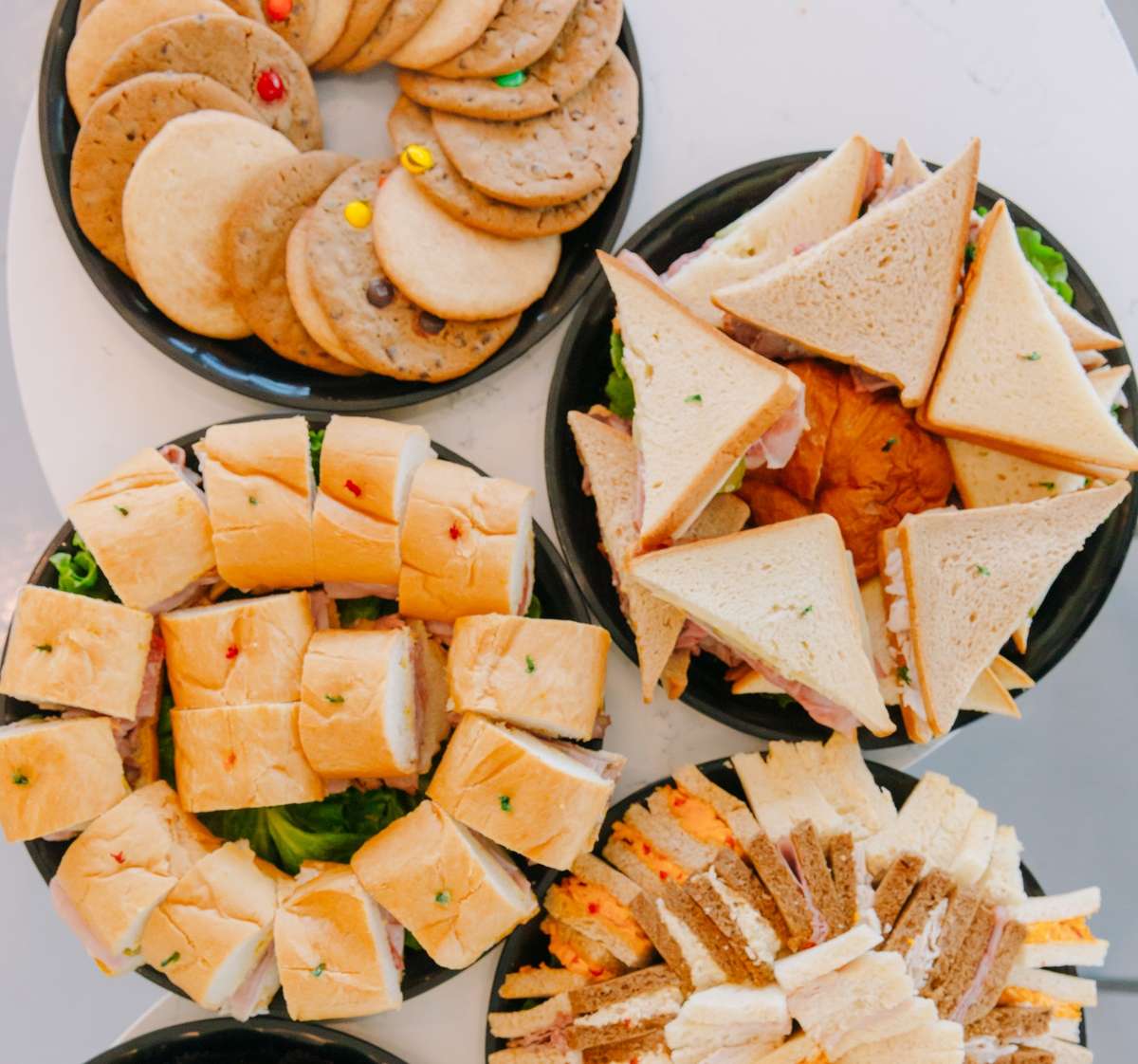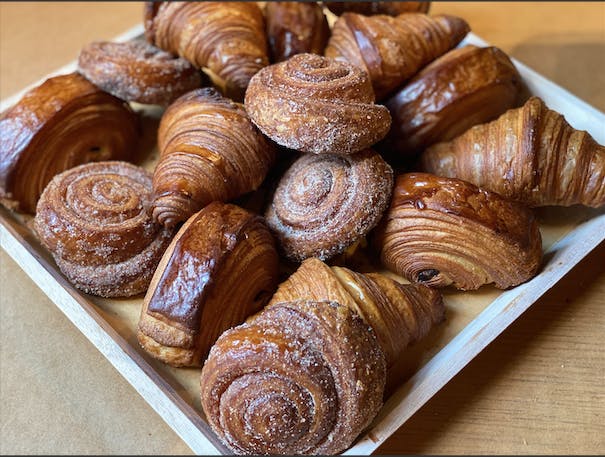Recognizing the Art of Bakery Products: From Fresh Baked Breads to Irresistible Pastries and Finger Foods
The elaborate art of pastry shop items includes a spectrum of methods and ingredients that change basic elements right into cooking delights. From the scientific research behind the best loaf of bread, where fermentation and gluten development play critical functions, to the skill needed for developing split breads, each facet reveals a compelling narrative of craftsmanship. The flexibility of finger foods shows exactly how flavor and texture can be artfully combined to involve varied preference choices. As we check out these aspects, one might question: what underlying principles govern the success of these beloved productions?
The Science of Bread Making
At the heart of every loaf of bread lies a remarkable interaction of chemistry and biology. The process of bread making starts with the mix of flour, yeast, salt, and water-- each ingredient playing an important duty in the final product.
Yeast, a living microorganism, ferments the sugars existing in the flour, producing carbon dioxide and alcohol in the procedure. The co2 gas creates bubbles in the dough, triggering it to climb and create a light texture. The temperature and moisture throughout fermentation significantly influence yeast activity and, as a result, the bread's taste and appearance.

Learning Bread Methods
Just how can one accomplish the fragile balance of appearance and flavor that specifies remarkable bread? Mastering bread techniques needs a deep understanding of active ingredients, techniques, and the scientific research behind them. Fundamental to this craft is the choice of high-quality components-- flour, butter, sugar, and eggs-- each playing an essential function in the last product's taste and appearance.
The technique of lamination, which includes folding layers of dough and butter, develops the desired flakiness in pastries like croissants and smoke bread. Accuracy in temperature level is important, as butter should stay cool to ensure ideal layers. Appropriate blending methods, such as the creaming strategy for cakes, make sure even incorporation of air and fat, resulting in a light and ventilated crumb.
Additionally, maintaining the right moisture degrees throughout baking can substantially affect the result, making certain that pastries climb properly and achieve that golden-brown surface. The art of pastry likewise demands perseverance and technique; each effort improves one's ability and understanding of the intricate balance required to produce irresistible pastries that delight the detects. Proficiency in these techniques inevitably distinguishes a knowledgeable pastry chef from an amateur.
Sorts Of Finger Foods
The globe of culinary delights expands past pastries to incorporate a vast selection of finger foods, which are commemorated for their ease and convenience. These bite-sized treats are best for social events, providing an array of tastes and appearances that accommodate diverse tastes.

On the sweeter side, mini tarts and bite-sized cupcakes use a fascinating finish to any meal, attracting those with a craving for sweets. In addition, cheese and charcuterie boards function as a sophisticated choice, Recommended Reading enabling guests to personalize their attacks with an array of meats, fruits, cheeses, and nuts.
Taste Profiles in Cooking
Baking is an elaborate dance of flavor accounts that incorporates pleasant, mouthwatering, and umami notes to produce an unified experience for the taste buds. Understanding these profiles is essential for bakers looking for to boost their developments.
Active ingredients such as delicious chocolate and caramel present complex wonderful notes that can either dominate or match other tastes. Ingredients like cheeses, flavors, and natural herbs can change an easy dough right into a multifaceted taste experience.
Umami, regularly neglected in cooking, plays a significant function in improving flavors. Active ingredients such as aged cheeses, fermented products, or even particular nuts add to a mouthwatering deepness that enhances general preference.
Additionally, the interplay of level of acidity from ingredients like buttermilk or citrus passion can lighten up tastes, offering a rejuvenating website here counterpoint to sweet taste. By attentively combining these flavor profiles, bakers can craft items that reverberate with diverse tastes, producing a remarkable cooking experience. Eventually, understanding flavor accounts is vital to development worldwide of baking.
Vital Baking Equipments and Active Ingredients
Recognizing taste accounts in baking sets the phase for choosing the right tools and components that promote the creation of extraordinary baked goods. The structure of effective cooking lies in having crucial tools at hand. Key products include blending bowls, determining mugs, and spoons for precision, along with a strong stand mixer or hand mixer for easy blending. A trustworthy set of baking pans-- such as sheet frying pans, loaf frying pans, and cake pans-- is crucial for attaining wanted textures and forms. look at this website
In regards to components, quality matters considerably. Flour functions as the backbone of a lot of recipes; picking the ideal type-- be it all-purpose, bread, or bread flour-- can considerably influence the outcome. Sugar not just sweetens however also contributes to texture, while eggs act as binders and raising representatives. Cooking powder and baking soft drink are vital for developing lift in cakes and pastries.
Furthermore, integrating taste boosters like vanilla essence, spices, and citrus zest can elevate your creations. By guaranteeing accessibility to these essential devices and active ingredients, bakers can with confidence start their cooking trip, crafting a varied range of delightful baked products.
Conclusion
Proficiency in bread making, bread preparation, and finger food presentation reveals the complex partnerships in between ingredients and procedures. Catering Maddington. Checking out varied taste profiles improves the baking experience, while important tools and active ingredients provide the structure for success.
Exactly how can one achieve the fragile equilibrium of structure and flavor that specifies exceptional bread? Essential to this craft is the option of top quality ingredients-- flour, butter, sugar, and eggs-- each playing a critical duty in the final item's flavor and appearance.

Comprehending taste accounts in cooking sets the phase for picking the right tools and ingredients that facilitate the production of remarkable baked items. Checking out varied taste accounts improves the baking experience, while vital tools and components provide the structure for success.